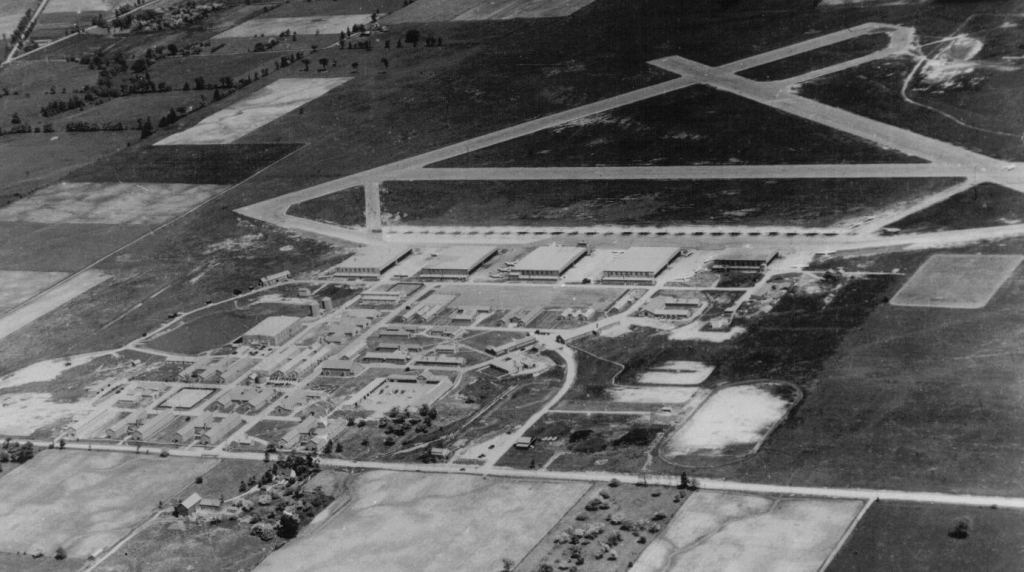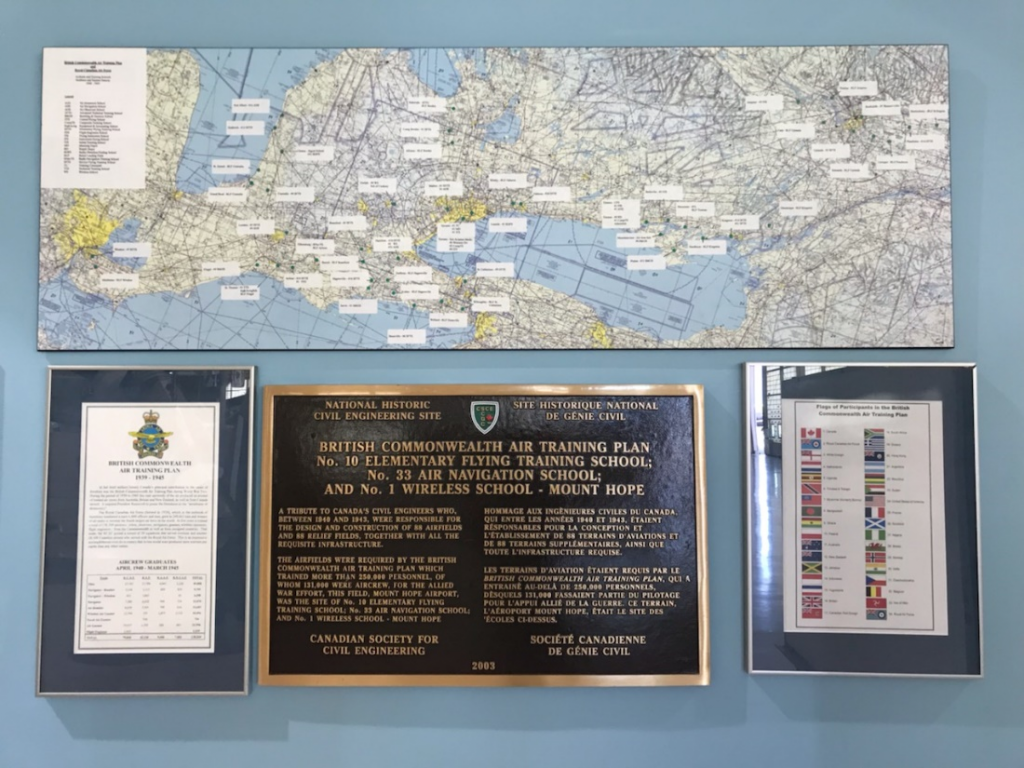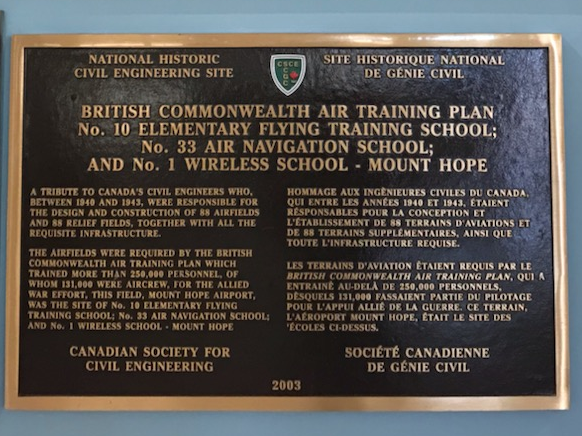
Site Location: Lat.: 43° – 09’ – 52” N; Long.: 79° – 54’ – 51” W. (GPS: 43.1644065, -79.9141356) Warplane Heritage Museum, 9820 Airport Road, Mount Hope. Leave Highway 403 at Exit 61, taking King’s Highway 6 south toward Port Dover/Caledonia. After 8.4 km, turn left onto Ramp 6 To Airport and, after 0.6 km, turn right (east) on Airport Road. Proceed 0.3 km to the Warplane Heritage Museum, on the left.
Plaque Location: The plaque is the centrepiece of a British Commonwealth Air Training Plan exhibit within the Warplane Heritage Museum at the John H. Munro International Airport in Hamilton. The museum is open seven days a week from 9:00 am to 5:00 pm. The entrance fee is $15.

Description: In December 1939, Great Britain, Canada, Australia and New Zealand reached an agreement to train 1500 aircrew per month, starting in April 1940. The total estimated cost was $600 M and the estimated Canadian contribution, $350 M, was considerable given the total federal budget for 1939 was $500 M. The training rate peaked at over 3000 graduates per month. The total cost of $ 1.76 billion included a Canadian contribution of $1.59 billon.

Constructed in 1940, the Mount Hope Airfield housed: the No. 10 Elementary Flying Training School (EFTS) from 1940 to 1942, flying Tiger Moth and Finch aircraft; the No. 33 Air Navigation School from 1941 to 1944, flying Anson aircraft; and, the No. 1 Wireless School from 1944 to 1945, flying Norseman, Tiger Moth, and Stinson aircraft. The field featured three 46 m. wide runways, two 850 m long and one 904 m long. After the war, it was a base for Hamilton RCAF 424 Reserve Squadron but gradually evolved to civilian use. The military left in 1964. The airport remains in service today as the John H. Munro Hamilton International Airport.
Historic Significance: The challenges for Canadian civil engineers working on the project included site selection and then the design and construction of runways, taxiways, roads, services, hangers, barracks and many other buildings to a very demanding schedule. The key to success was the development of standard airfield layouts and standard building designs using prefabricated wood components. In 1945, Winston Churchill described the BCAPT as “a spacious task imaginatively conceived and most faithfully carried out.” The initiative provided the foundation of Canada’s post-war air transportation network: of the 176 airfields constructed, 62 remain in service today including the Toronto and Vancouver International Airports.

Plaque Wording: National Historic Civil Engineering. CSCE. BRITISH COMMONWEALTH AIR TRAINING PLAN No. 10 ELEMENTARY FLYING TRAINING SCHOOL No. 33 AIR NAVIGATION SCHOOL AND No. 1 WIRELESS SCHOOL – MOUNT HOPE. A tribute to Canada’s civil engineers who, between 1940 and 1943, were responsible for the design and construction of 88 airfields and 88 reilef fields, together with all the requisite infrastructure. The airfields were required by the British Commonwealth Air Training Plan which trained more than 250,000 personnel, of whom 131,000 were aircrew, for the Allied war effort. This field, Mount Hope Airport, was the site of No. 10 Elementary Flying Training School; No. 33 Air Navigation School; and No. 1 Wireless School – Mount Hope. Canadian Society for Civil Engineering. 2003.
SCGC. Site Historique National. CSCE. BRITISH COMMONWEALTH AIR TRAINING PLAN No. 10 ELEMENTARY FLYING TRAINING SCHOOL No. 33 AIR NAVIGATION SCHOOL AND No. 1 WIRELESS SCHOOL – MOUNT HOPE. Hommage aux ingénieures civiles du Canada, qui entre les années 1940 et 1943, étaient résponsables pour la conception et l’étabilssement de 88 terrains d’aviations et de 88 terrains supplémentaires, ainsi que toute l’infrastructure requise. Les terrains d’aviation étaient requis par le British Commonwealth Air Training Plan, qui a entrainé au-delà de 250,000 personnels, dèsquels 131,000 fassaient partie du pilotage pour l’appui allié de la guerre. L’aéroport Mount Hope, était le site des écoles ci-dessus. Société canadienne de genie civil. 2003.

Plaque Unveiling Ceremony: The plaque was unveiled in the “Dome” of the Canadian Warplane Heritage Museum on May 13, 2006.

Links to Online Documentation:
Alistair MacKenzie, “History: A Herculean Task”, Canadian Consulting Engineer, 2001.
Veterans Affairs Canada, “The British Commonwealth Air Training Plan”